R architecture designed the new facility of the SIRTA, a climate & atmospheric research observatory located in the Paris-Saclay campus and affiliated to the Polytechnic Institute of Paris. The circular plan proposed by the French architecture office solves an equation of use while establishing a 360° relationship with the landscape.
– text by the authors
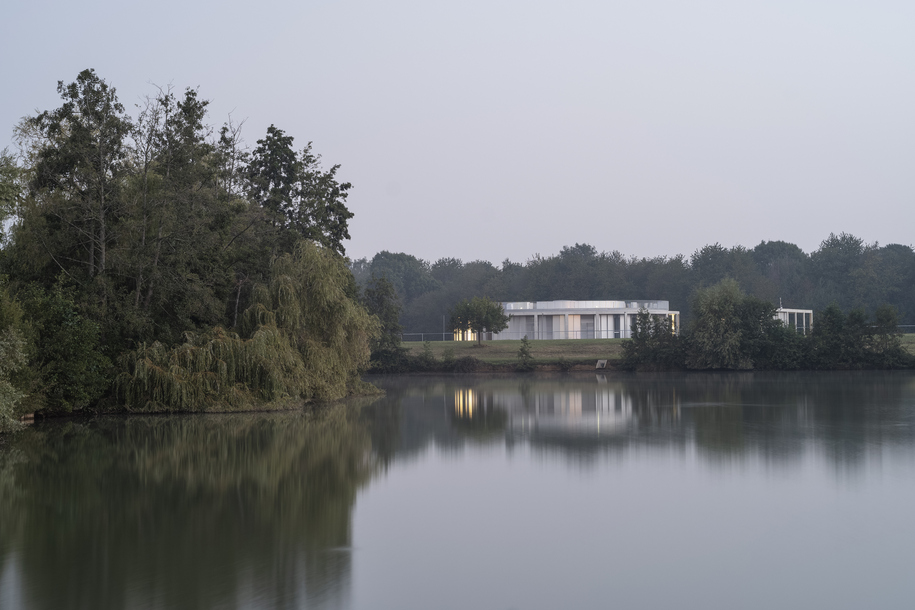
This atmospheric research observatory is a French national experimental facility dedicated to climate and environmental research. It is one of the few sites in Europe offering the instrumentation, laboratories, and reception capacities necessary to study atmospheric physico-chemical processes, from the surface to the top of the troposphere to better understand, anticipate and predict heat waves and pollution peaks as well as to find innovative solutions for renewable electricity production.
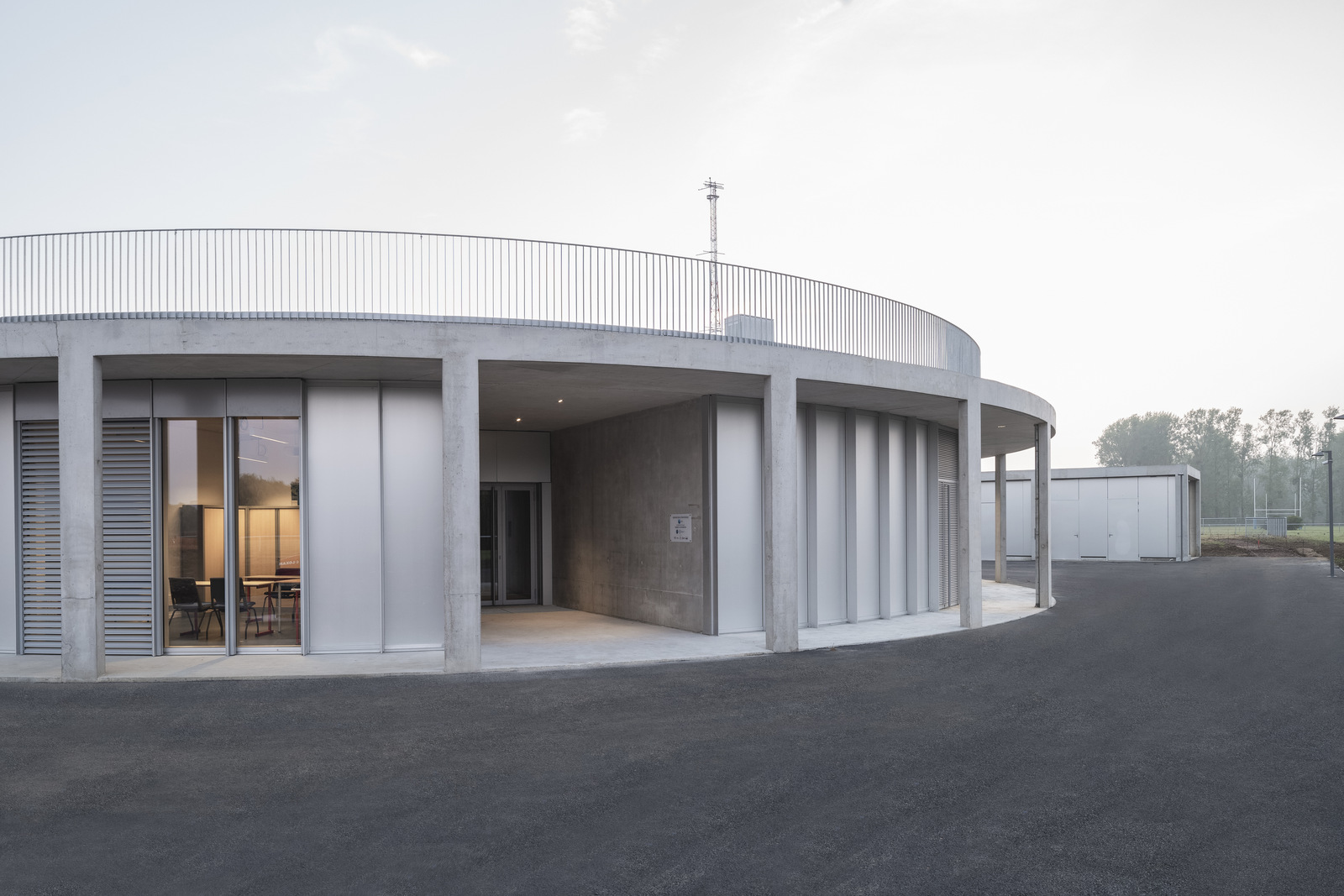
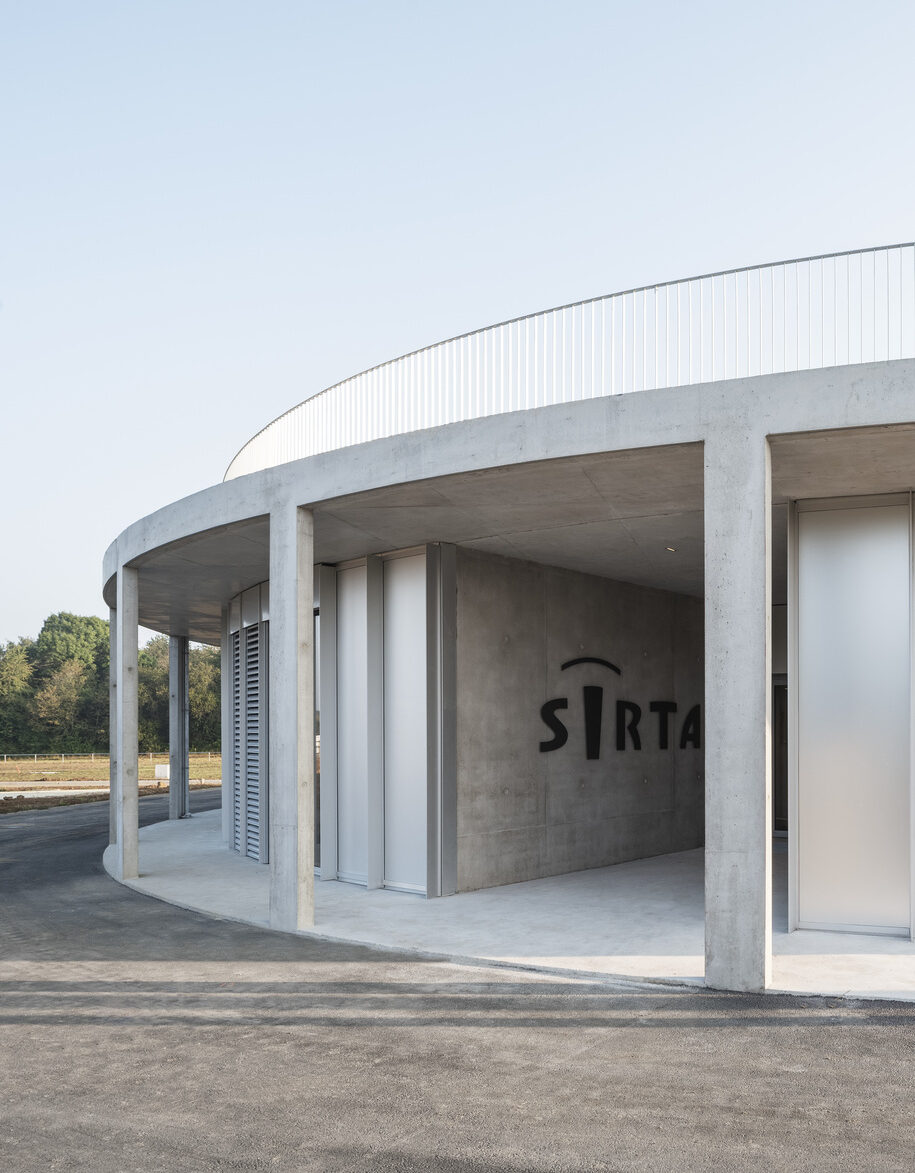
Facing the École Polytechnique, in the centre of a meadow stretching between the north shore of the campus lake and a preserved wood, R designed a round building that radiates towards its environment, both terrestrial and spatial. The chosen elementary form and careful aesthetics give the whole a great deal of autonomy to better ensure all it’s missions: surveillance, experimentation and education. The main building accommodates in an ascending spiral, a central “visibility space” encircled by research laboratories crowned by an instrumented platform.
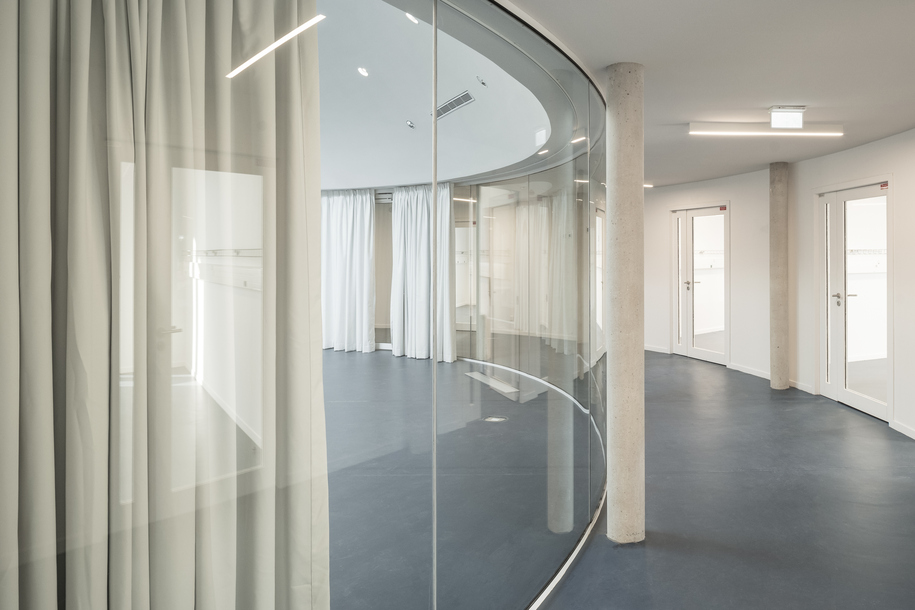
The central space is a versatile place capable of hosting workshops, conferences and public events. Bathed in natural light thanks to a dome pierced at the zenith, it stages the activities of SIRTA and its relationship to the sky. Around this space, a large gallery serves all the research laboratories which are located in a third ring. Glazed on both sides, the workspaces offer tangent views towards the heart of the building and the surrounding nature.
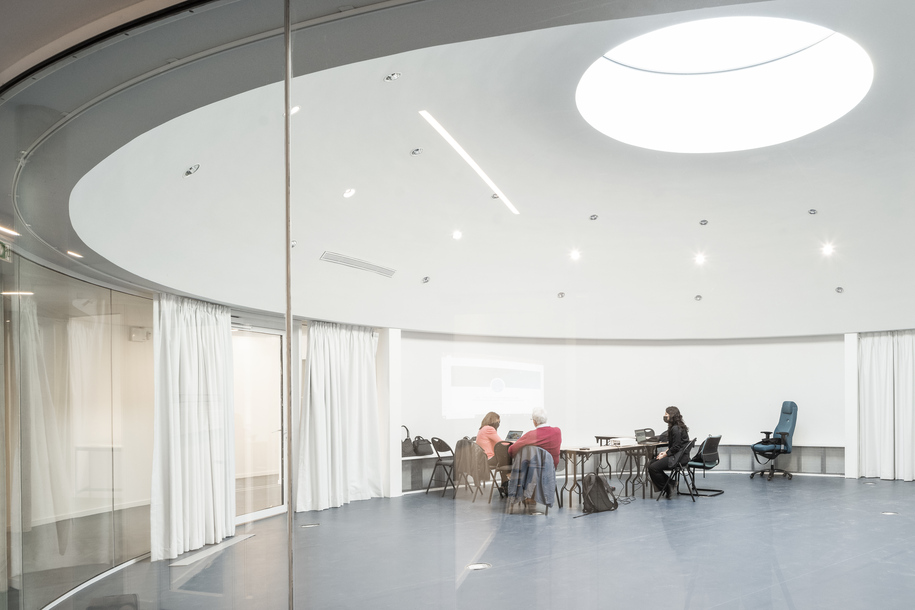
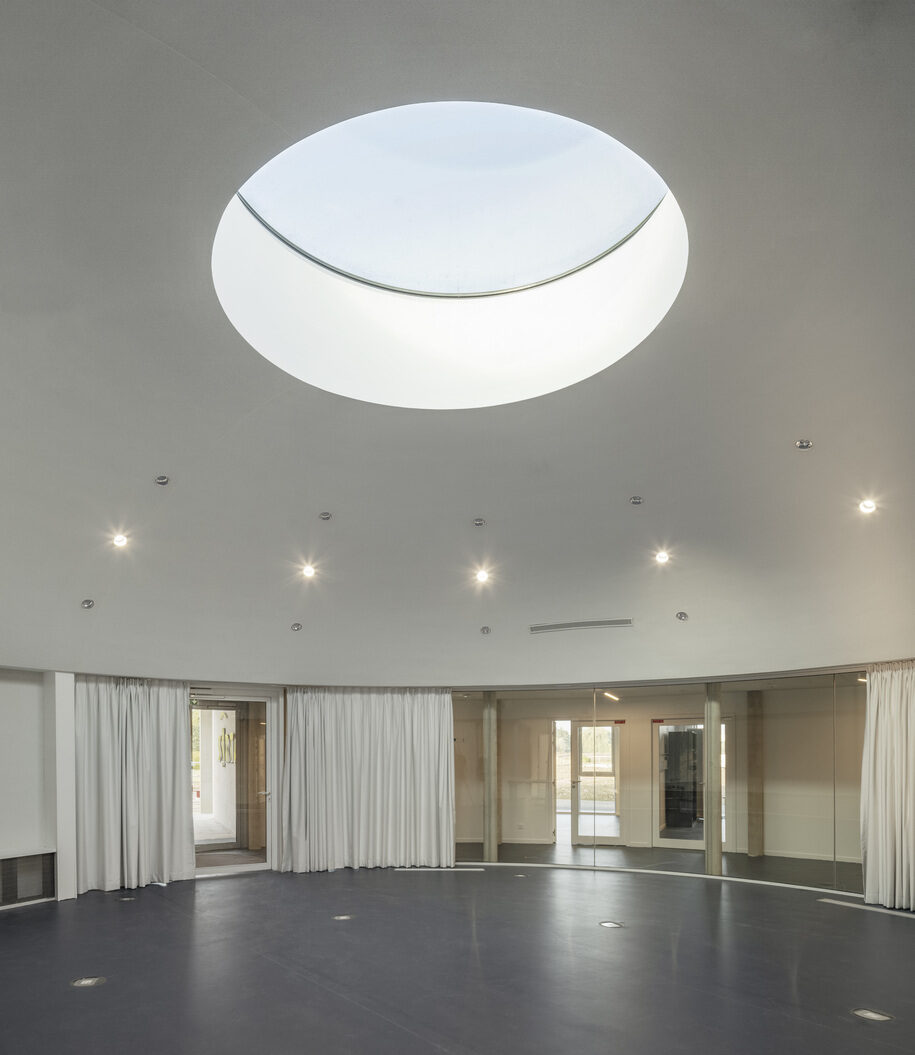
The interior gallery is extended by a staircase serving the roof equipped with various measuring instruments. This platform is supported by 22 poles located on the edge. At its centre, a technical space emerges by one meter. Like a telephoto lens, this protruding cylinder is coated with polished aluminium that reflects the environment and the sky.
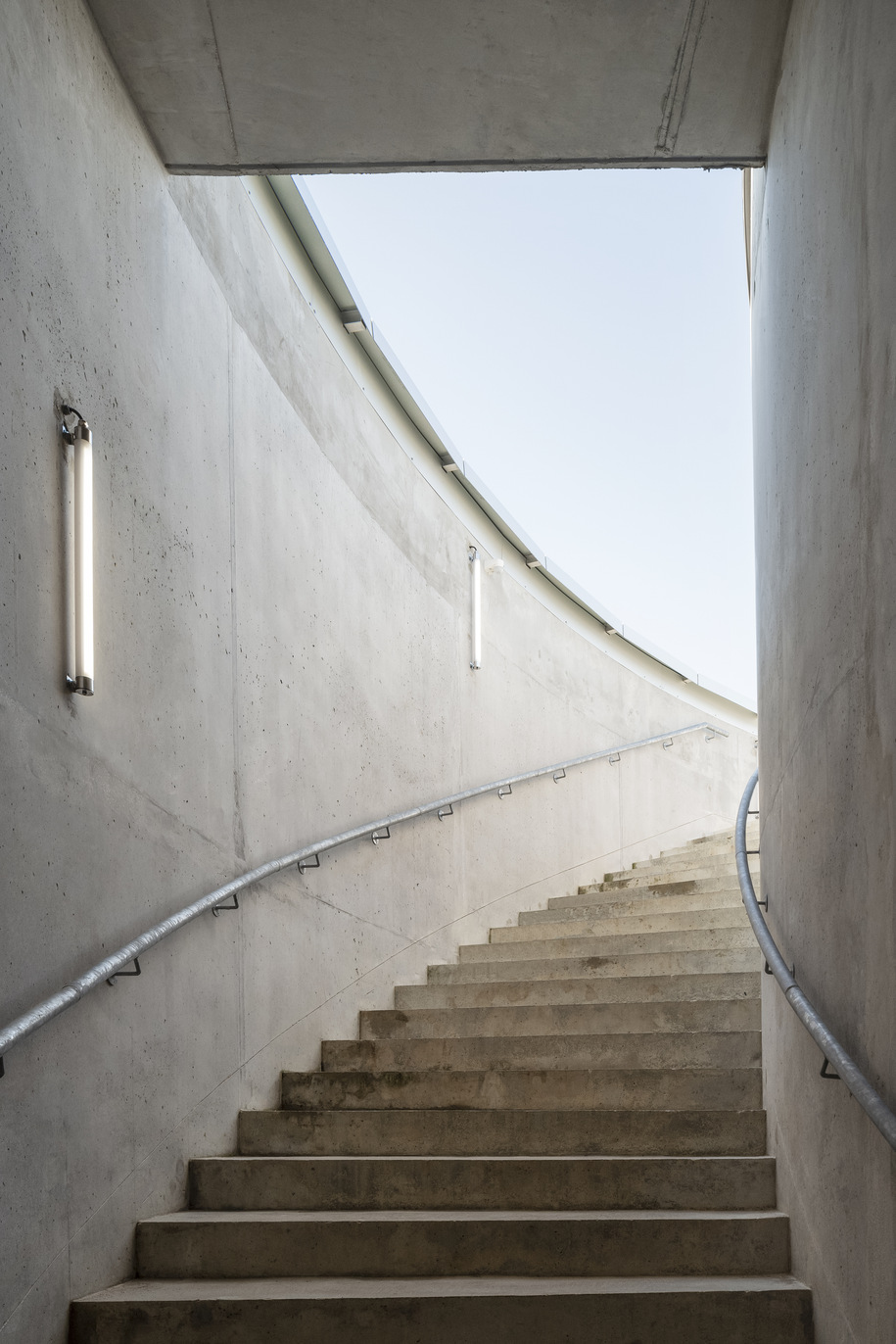
A concrete structure and an alternation of solid anodized aluminium panels and full height glazed panels make the building. The concrete is poured in one go. The rhythm is set by the concrete pillars, the aluminium thorns and the steel guardrail of the roof. The exterior gallery which houses a covered circulation also protects the facade from rain and sun.
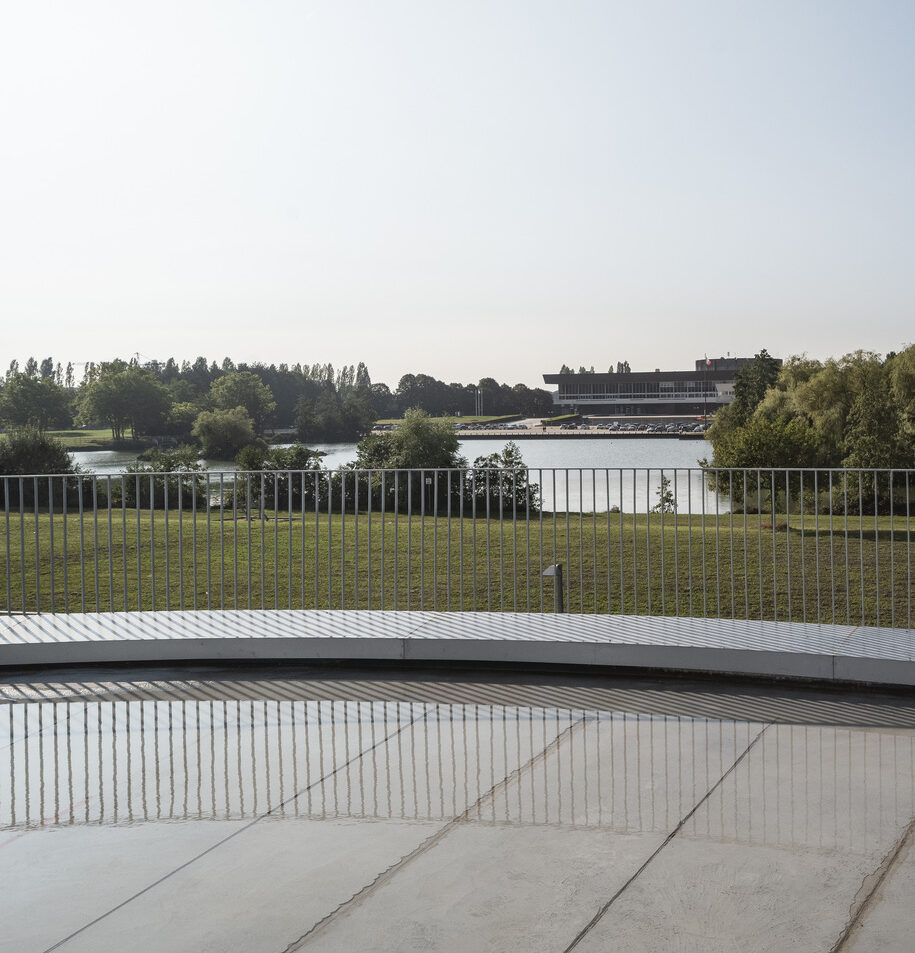
Rectangular in shape, the outbuilding and parking spaces counterbalance the roundness of the observatory building and wedges the facility to the service road.
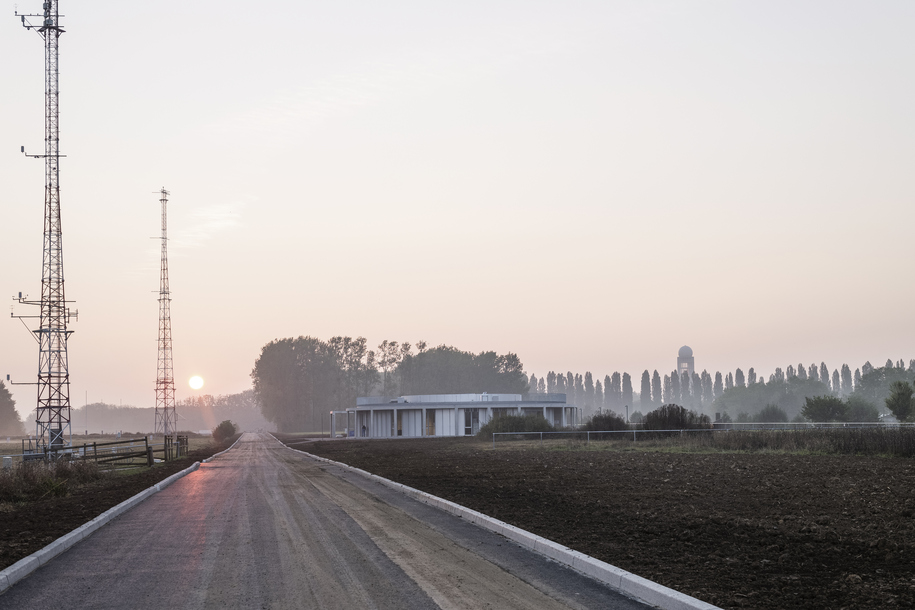
Paris-Saclay is a large-scale campus that represents the pinnacle of France’s national higher education and research. Spanning over a large agricultural plateau, wooded hills, ponds and water channels, between Urban valleys and just a few kilometres south of Paris, the area is now home to many of the Europe’s largest high-tech corporations, and to the two best French universities Paris-Saclay University (CentraleSupélec, ENS Paris-Saclay, Paris-Saclay Faculty of Science, etc.) and the Polytechnic Institute of Paris (École Polytechnique, Telecom Paris, etc.). In 2013, the Technology Review put Paris-Saclay in the top 8 world research clusters.
Plans
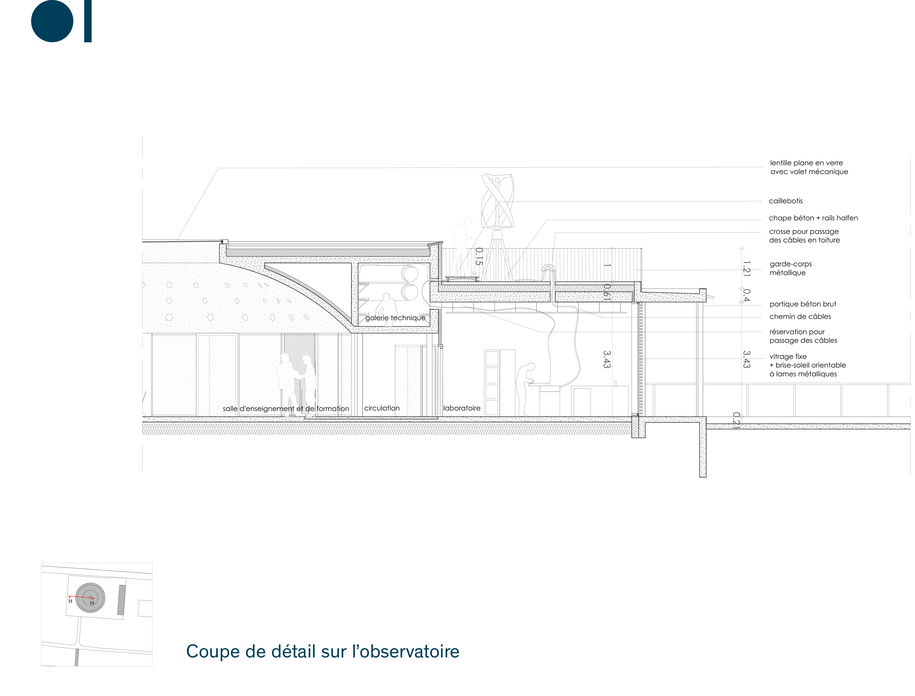
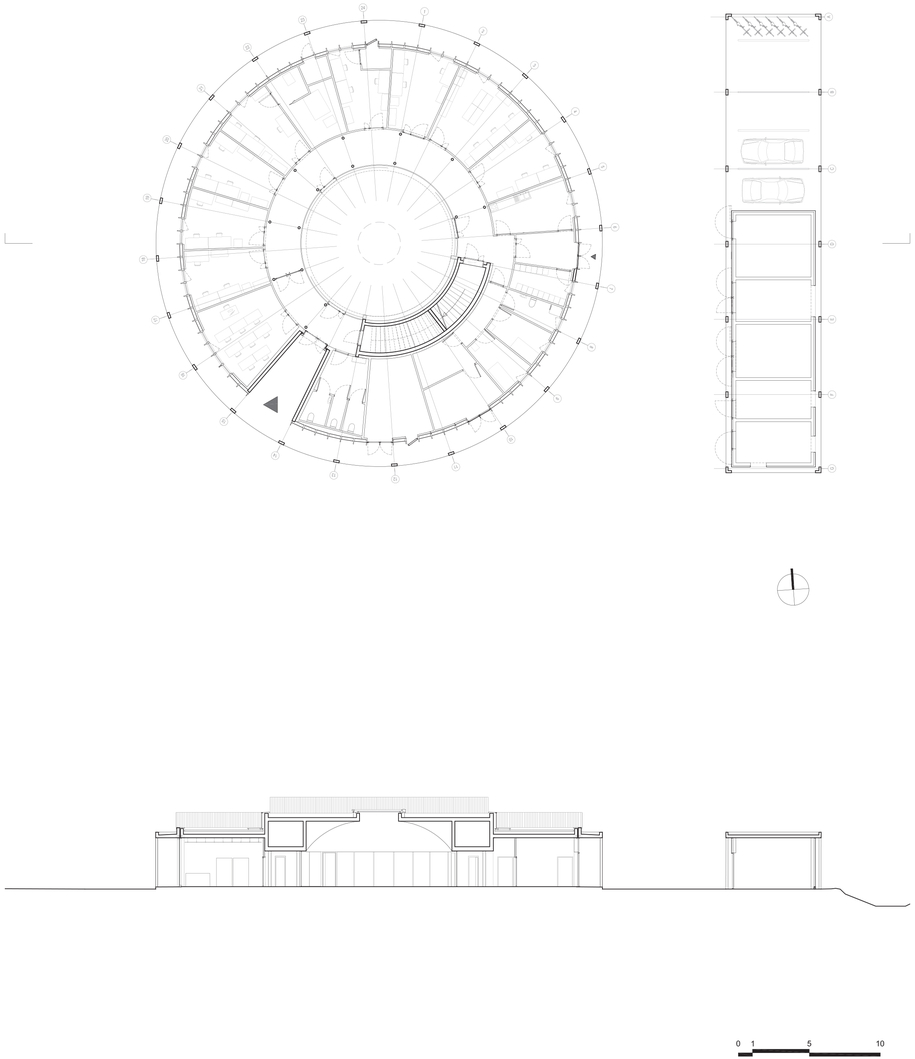
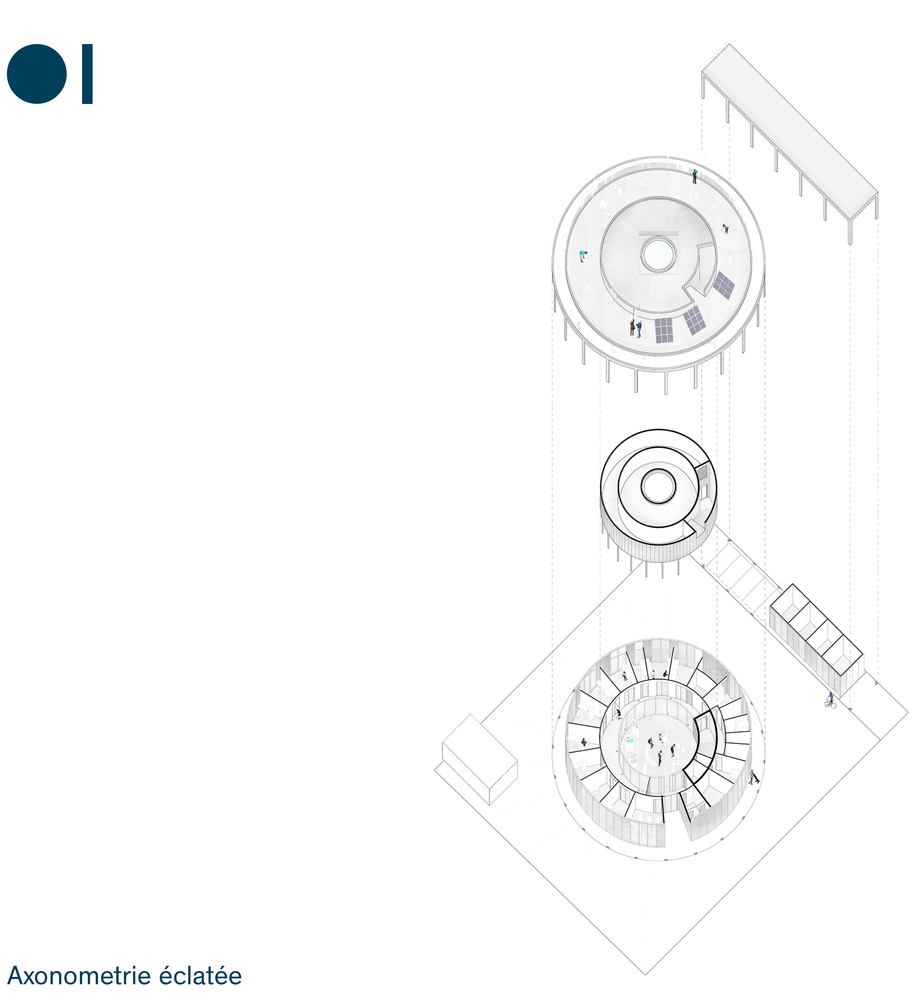
Credits & Details
Architects: R Architecture
Location: Paris-Saclay campus
Date: 2021
Photography: Cyril Weiner
READ ALSO: The Greenary, A House Built Around a Tree | by Carlo Ratti

